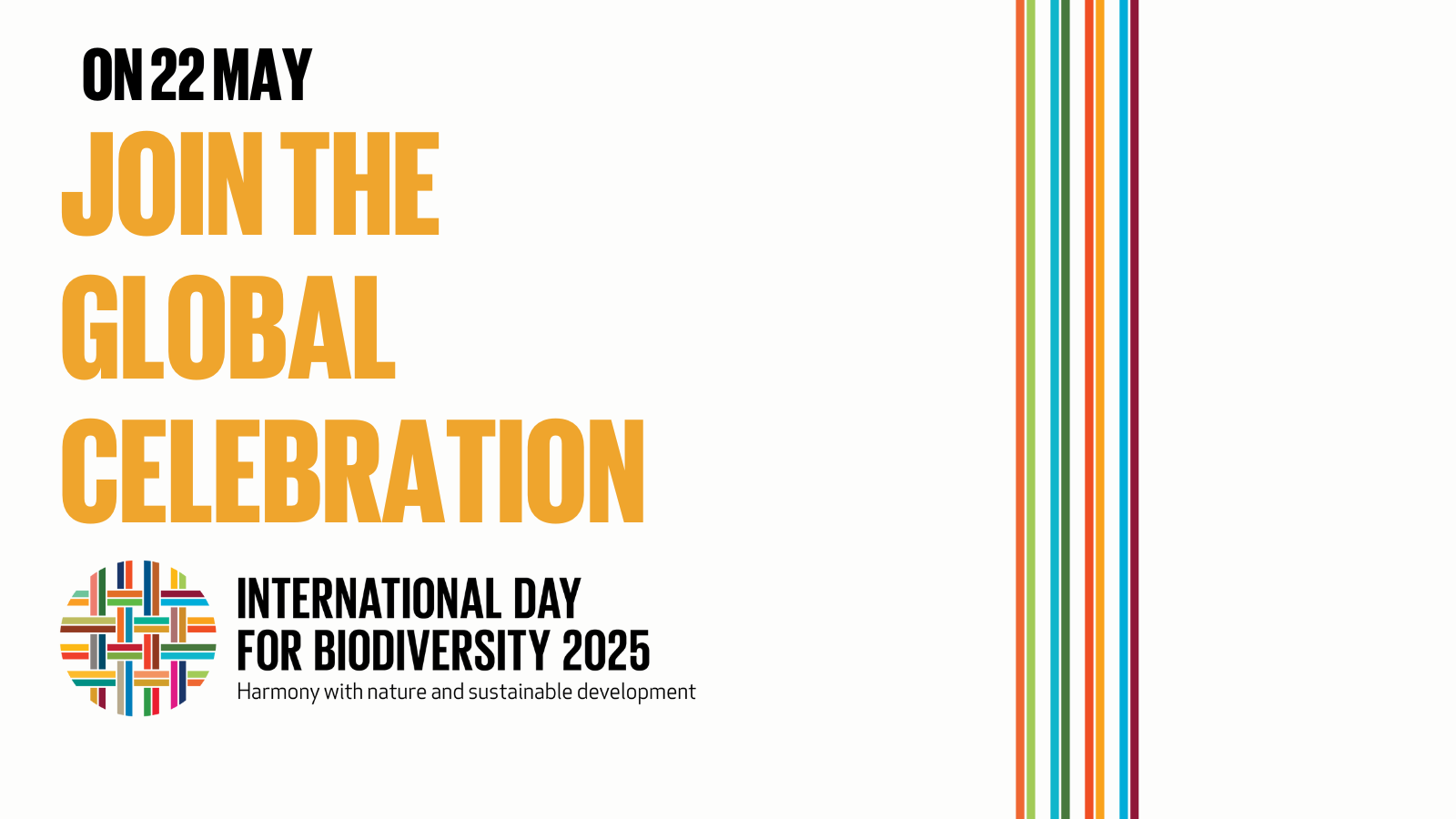As we mark International Day for Biological Diversity on May 22, we are reminded that biodiversity is the foundation of a healthy planet – and its loss impacts the systems we depend on for survival. This year’s theme, “Harmony with Nature and Sustainable Development”, highlights the linkages between the Sustainable Development Goals (SDGs) and the Goals and Targets of the Kunming-Montreal Global Biodiversity Framework (KMGBF) as two universal agendas that must be pursued in tandem.

Image: Convention on Biological Diversity (CBD)
Today, we are facing the converging crises of biodiversity loss, water and food insecurity, health risks, and climate change, all rooted in the degradation of nature. The IPBES Nexus Assessment, published last year, highlights these interlinked challenges and the importance of collaboration to address these issues. It includes more than 70 response options that can generate benefits across multiple nexus elements and help achieve global goals and targets.
Among these, the report suggests that the control of invasive species benefits four nexus elements: water, food, health, and biodiversity, with particularly positive impacts on biodiversity. Invasive alien species (IAS) are one of the top five drivers of biodiversity loss, having contributed to 60% of global plant and animal extinctions and costing over $423 billion per year to the global economy.
On vulnerable ecosystems like islands, the impacts of invasive species can be especially severe. Invasive rodents prey on native species, such as birds, leading to population declines and disrupting ecosystem balance. Successful control efforts – such as on Tonga’s Ha’apai islets – not only help native species recover, but also restore the vital nutrient flows that connect land and sea, leading to healthier fish populations, stronger reefs, more resources for local communities, and a more climate-resilient ecosystem.

Beyond ecological damage, IAS threaten human health. Around 85% of documented invasive species impacts negatively affect people’s quality of life, including through the spread of diseases such as Zika and chikungunya by invasive Aedes mosquitoes, or more recently the return of malaria in urban areas in Africa due to the spread of Anopheles stephensi, considered a key threat to malaria elimination by the World Health Organization (WHO). Climate change is amplifying these risks by expanding the range of disease-carrying vectors and creating conditions that favor their spread. At the same time, biodiversity loss itself increases the risk of zoonotic spillovers. Cases of zoonotic malaria, transmitted from macaques to humans by Anopheles mosquitoes, rose by nearly 19% between 2022 and 2023 in South-East Asia. As wildlife habitats are destroyed, animals are pushed into closer contact with people and livestock, increasing the likelihood of outbreaks and future pandemics.
In the face of these overlapping crises, innovation is crucial. Synthetic biology approaches are being explored to complement traditional conservation methods and offer scalable solutions to complex challenges that cannot be addressed with existing tools alone. Innovations such as gene drive technologies could, for example, help control invasive rodents by providing a targeted, cost-effective addition to the island conservation toolbox. Genetic approaches are also being explored as a potential tool to control mosquitoes that are vectors of disease. Genetic engineering could also be leveraged to enhance disease resistance in vulnerable species (such as amphibians threatened by deadly fungal pathogens) and to increase coral resilience to rising water temperatures caused by climate change. Strengthening coral health would not only help preserve marine biodiversity but also support coastal communities that rely on healthy reefs for storm protection, fisheries, and tourism, all of which are essential for their survival and economic wellbeing.
The adoption of the Global Action Plan on Biodiversity and Health at the 16th Conference of the Parties to the Convention on Biological Diversity (CBD COP16) signaled growing global recognition of the interlinkages between biodiversity and health. It reinforced two clear messages: humanity is not separate from biodiversity, and collaborative action is essential to address these joint crises.
Addressing conservation challenges not only strengthens the health of ecosystems but also supports the health, livelihoods, and local economies of the communities that depend on them. The Kunming-Montreal Global Biodiversity Framework and Sustainable Development Goals are not separate agendas; they are intertwined roadmaps guiding us toward a future where people and nature can thrive. A world in harmony with nature is within reach – if we act together.
